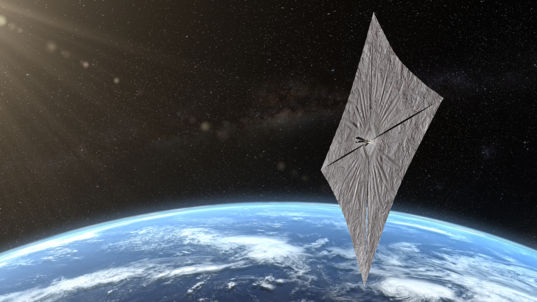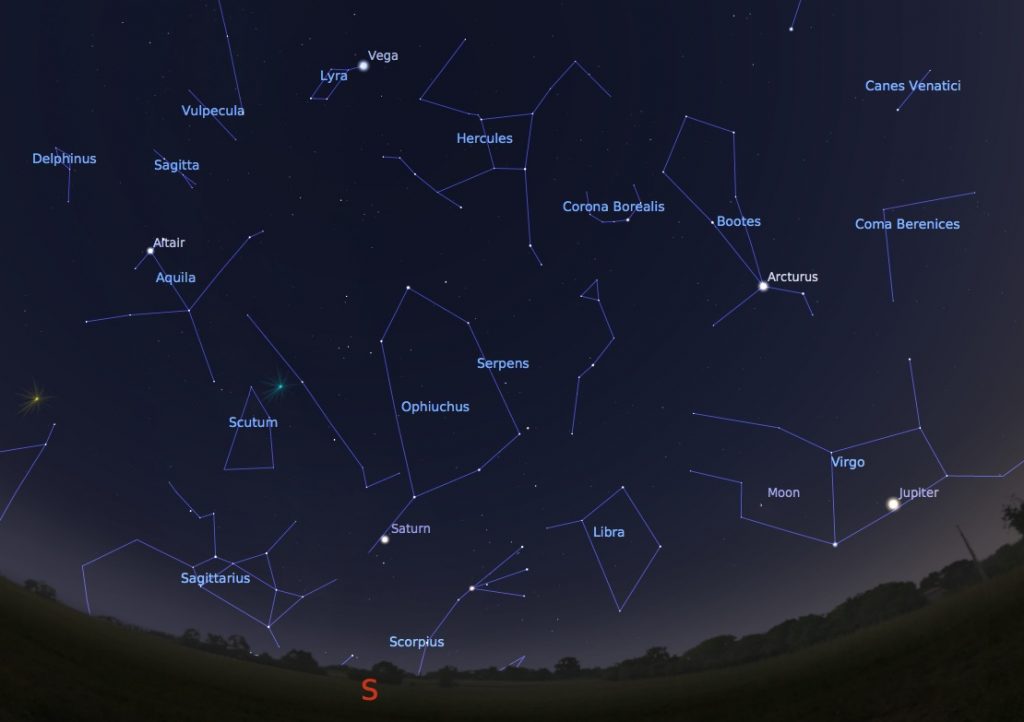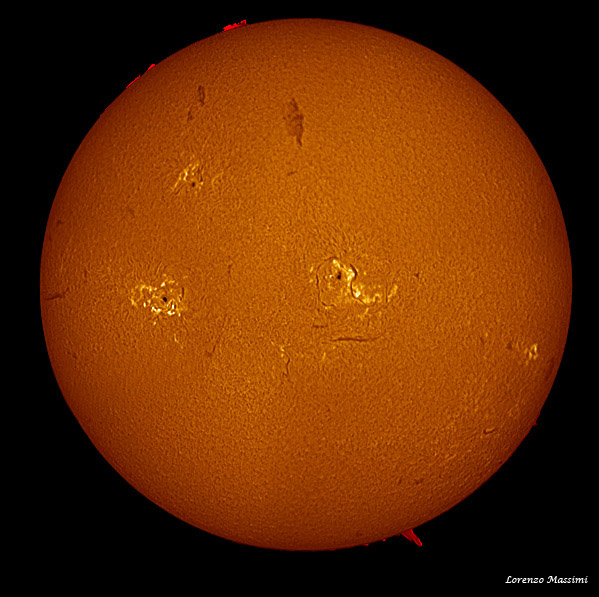The Earth, in its speedy inner orbit, swung between the Sun and Uranus last week. On Oct 19, 2017 Uranus reached opposition which implies that we are about as close to Uranus as we get and so it appears somewhat larger and brighter. It is a good time to get a glimpse of Uranus, especially with the weather forecast calling for a few nights with clear skies.

Uranus’ current location is in the constellation Pisces and is positioned due south around midnight PDT. Uranus is dim with a magnitude of 5.7 and is barely visible with naked eyes and then only from a very dark site. It is visible with binoculars or small telescope but appears small with an apparent diameter of just 4.1 arc-seconds. At higher magnifications, you might notice its disc-shape and its blue-green tint. Don’t expect to see surface features on the ice giant;. Even giant professional telescopes can barely do that.
Originally Thought to be a Comet
William Herschel discovered Uranus in England on the night of March 13, 1781. At first Herschel thought it was a comet, but it was confirmed as a planet several years later. Herschel tried to have his discovery named “Georgia Sidus” after King George III. Astronomer Johann Bode suggested naming it after the Greek deity Ouranos.
Its Cold There
Uranus is much closer to the Sun than Neptune but the minimum temperature on Uranus (-224 degrees C) is colder than Neptune, making Uranus the coldest planet in the solar system.
Lots of Dim Moons
Uranus has 27 known moons to date, five of which can be observed from earth. Only, the four largest are visible in amateur instruments. Ariel, Umbreil, Titania, and Oberson are all dimmer than 14th magnitude but may be visible in telescopes larger than 10 inches. The moons of Uranus are named after characters in the the works of Shakespeare and Alexander Pope.

Long Days on a Titled Planet
Uranus nearly lies on its side with a tilt of about 98 degrees. Uranus completes a single rotation on its axis in about 17 hours. But the tilt of Uranus is so pronounced that one pole or the other is usually pointed towards the Sun. If you could stand on the north pole of Uranus at the start of its summer, you would see the Sun rise in the sky and circle around for 42 years (1/2 of a Uranian year). Then the Sun would finally dip down below the horizon and be followed by 42 years of winter darkness.
Less Surface Gravity than Earth
Uranus’ density is low at just 1.27 g/cm3 – the second-lowest density of any planet in the Solar System after Saturn. Despite the fact that Uranus is 14.5 times as massive as the Earth, its significantly lower density means that you would only experience about 89% the force of Earth’s surface gravity, assuming you could stand on Uranus’ cloud tops.
Only been Visited Once
Only the Voyager 2 spacecraft has made a close approach to Uranus. On January 24th, 1986, it passed within 81,000 km of the cloud tops of Uranus and took thousands of photographs of the gas/ice giant and its moons before heading off towards Neptune. The possibility of sending the Cassini spacecraft from Saturn to Uranus was evaluated during a mission extension planning phase in 2009 but never came to fruition, as it would have taken about twenty years for Cassini to get to Uranus from Saturn.
Uranium Namesake
Uranium was discovered in 1789, just eight years after Uranus’ discovery, by the German chemist Martin Heinrich Klaproth. Klaproth chose to name the new element in honour of the newly discovered planet.
Dark Rings
Uranus has dark coloured rings. The rings are thought to made up of particles ranging in size from 0.2 to 20 meters that contain a mixture of ices, dust, and debris. Their discovery in 1977 was serendipitous. Astronomers James L. Elliot, Edward W. Dunham, and Jessica Mink planned to use the occultation of the star SAO 158687 by Uranus to study the planet’s atmosphere. However, when their observations were analyzed, they found that the star disappeared briefly from view five times both before and after it was eclipsed by the planet. They deduced that a system of narrow rings was present.










